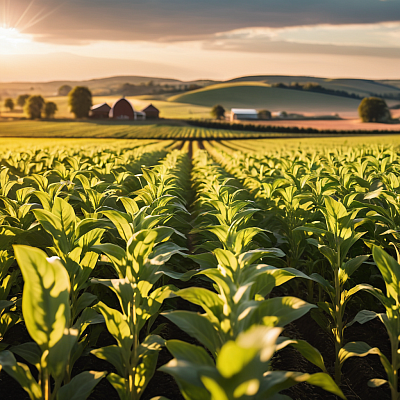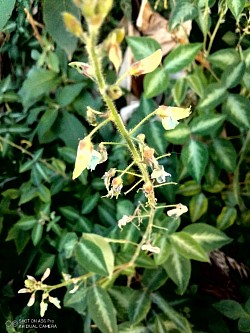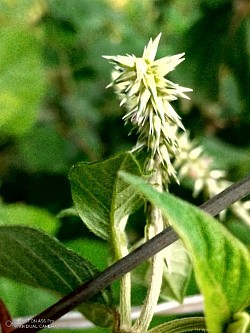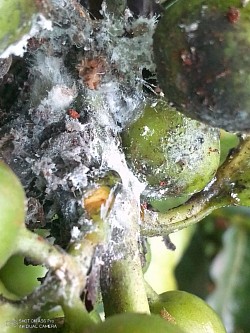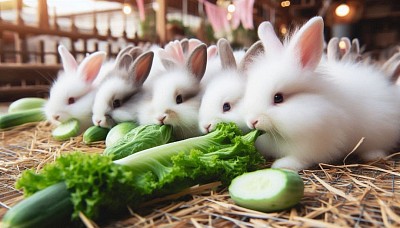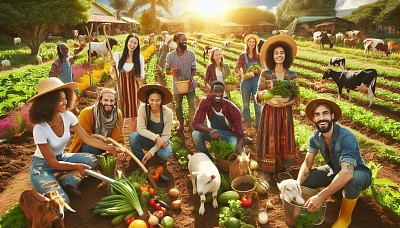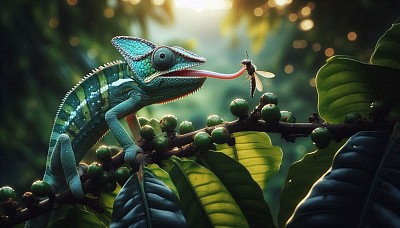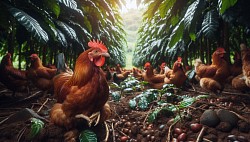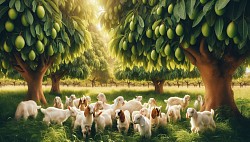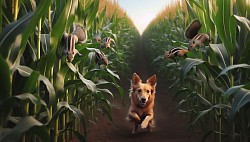Farming Gets Easier
Revolution
The ongoing Agrarian Revolution has significantly transformed farming practices by necessitating the adoption of more efficient and sustainable methods. These approaches not only optimize processes but also enhance both the quality and quantity of agricultural output while minimizing costs. By harnessing the capabilities of advanced and proven sustainable technologies, the agricultural sector can achieve greater productivity and improved satisfaction among producers.
The incorporation of technologies such as the Internet of Things, machine learning, artificial intelligence, e-commerce, agricultural management software, and Agri-genetics-Tech, alongside emerging innovations, presents substantial potential to strengthen agricultural production. This technological advancement promises to revolutionize farming, leading to increased yields and better support for agricultural producers.
Global climate change has become a critical factor affecting agricultural activities, causing concern among farmers. The unpredictability of weather patterns, coupled with reduced production and heightened risks, has led many farmers to abandon their agricultural endeavors. Addressing these challenges is vital to ensuring the long-term sustainability of agriculture.
The expanding global population demands increased agricultural output to satisfy rising consumption needs. The decline in farmer participation exacerbates worries about meeting these demands, potentially resulting in food insecurity and greater reliance on processed foods. Acknowledging the gravity of these inefficiencies, the United Nations has emphasized the importance of sustainable agricultural practices in tackling these pressing issues.
"What is Agriculture?" By EnvirosAgro
"Agriculture is the application of art or science by humans to natural resources that is plants, animals, soil, water and air for sustainability.
In the grand scheme of agriculture, the intricate interplay between nature and farming practices is clearly evident. Take the example of bees, who play a crucial role in the natural process of pollination. These remarkable creatures collect nectar and pollen from flowers, inadvertently facilitating the fertilization of fruits through their pollination activities. This creates an organic cycle where bees contribute to the fertilization of plants while relying on the plants as their source of food. This symbiotic relationship serves as a testament to the inherent connection between agriculture and nature.
Furthermore, farmers actively engage in apiculture, the practice of maintaining bee colonies for the production of honey. Alongside this, farmers cultivate various fruits through the practice of pomology. This replication of natural processes in agricultural production underscores the notion that human agricultural practices have been inspired by and adapted from the systematic processes found in nature.
The intricate processes of fruit fertilization and the creation of bee hives exemplify the blend of science and art in agriculture. Fruit fertilization, for example, is deeply rooted in scientific principles, while the construction of bee hives can be viewed as an artistic endeavour, showcasing the multifaceted nature of agricultural practices.
The case of bees also sheds light on the biodiversity inherent in nature; the coexistence of honey and fruits stands as a testament to the diverse and interconnected web of natural elements.
In essence, agriculture can be seen as a harmonious blend of art and science, encompassing the intricate relationships among crops, livestock, and related production systems within the framework of the natural world.
The practice of such natural scenes by human beings is what EnvirosAgro can call Application of art and science by human in natural resources that is plants, animals, soil, water and air for sustainability.
Modern Agriculture is the evolving application of advanced art or science by humans in the natural resources that is plants, animals, soil, water and air for sustainability.
The Bee case study serves as a powerful example of the diverse range of life found in nature. It highlights the concept of sustainability in nature, pointing out the importance of studying and understanding natural systems before attempting to replicate them in agriculture. The study emphasizes the idea that rather than trying to alter nature to fit our needs, we should first strive to comprehend it and then apply that knowledge to our practices.
EnvirosAgro recognizes the significance of this natural understanding in agricultural production. By delving into in-depth analysis and utilizing data from various studies, agriculture can progress toward a more nature-oriented approach. Farmers can greatly benefit from grasping the insights offered by this case study and incorporating both art and science into their agricultural practices to mirror natural production processes.
EnvirosAgro is devoted to incorporating such research to uphold its principles and values, ensuring that farmers acquire the necessary knowledge and understanding of agriculture.
In Malthusian demographic theory, Thomas Malthus observed that the development of agriculture initially led to an increase in population due to improved food supply. However, a paradox has emerged where the current agricultural practices, which initially supported a growing population, are now failing to adequately feed the existing population, resulting in food insecurity.
Check out this thought-provoking text:
Imagine a scenario where a sow gives birth to twelve piglets but struggles to provide enough nourishment for all of them. This raises the intriguing question: What are the underlying reasons for this food insecurity?
Numerous factors contribute to this paradox, but one often overlooked aspect is the widening gap between humanity and the natural world as the population grows. As people engage in activities that harm the environment, such as increased carbon emissions leading to global climate change, they inadvertently exacerbate food insecurity.
The shift from natural to unnatural practices has resulted in a multitude of challenges. While these unnatural practices may yield immediate benefits, they pose long-term threats. The impacts of such practices may not be immediately apparent, but they have the potential to jeopardize future generations' well-being.
Psychology in Agriculture
The intersection of psychology and agriculture has had a profound and multifaceted impact throughout history. Initially, the influence of psychology propelled the transition from hunter-gatherer societies to settled agricultural communities, marking a pivotal moment in human development. However, as time progressed, the influence of psychology on agriculture has taken on a more complicated and sometimes detrimental role.
Agriculture, being a multifaceted endeavour, demands a diverse set of skills, a wealth of knowledge, and extensive experience. Psychology, as the study of human behaviour, has the potential to aid farmers in comprehending and responding to the needs of their crops and livestock. This understanding can be advantageous. However, the same psychological insights can also be wielded to rationalize policies and actions that do not serve the best interests of farmers and their communities.
The shift from hunting and gathering to agriculture was undoubtedly influenced by psychological processes and human behaviour. This transition signifies the significant role played by human behaviour and cognitive processes in this pivotal period of human history. However, in recent years, a reciprocal relationship between agriculture and psychology has emerged.
Historically, agricultural pursuits were viewed as the primary means of socioeconomic development. Yet, in contemporary society, there has been a noticeable shift in perception. Farmers are sometimes regarded as akin to slaves or peasants. The view of agriculture has evolved from being primarily associated with prosperity and nobility to being stigmatized, particularly within educational and professional circles. The shift in perception surrounding agriculture from a historically revered occupation to one that is disparaged is striking.
Today, the recognition of agriculture as a vital and esteemed occupation has diminished, with widespread societal preference shifting toward white-collar jobs and the service sector. This mass exodus from production-based roles has led to a shortage of human resources in the agricultural sector. This phenomenon characterizes what is being termed as the "psychology of agriculture" by many within the industry, representing the evolving perception of agriculture from antiquity to the present era.
It is crucial to acknowledge that not everyone possesses the aptitude for agricultural pursuits, while for others, farming seems to be ingrained in their very essence. For instance, the Bantu communities in Africa have a strong cultural identity tied to farming, leading to the hypothesis that a propensity for agriculture could be rooted in genetic predispositions. This propels us to question the potential personality traits and psychological predispositions that dictate an individual's orientation towards agriculture. Could there be a genetic component influencing human behaviour, perceptions, and inclinations towards agriculture? These inquiries direct attention towards the interplay of psychology and genetics in shaping individual and collective attitudes towards agricultural practices.
The diversity of human capabilities and the complexity of the creation of each individual is a fundamental aspect of human existence. While some excel in business, others thrive in governance, highlighting the varied talents present within our species. However, relentlessly pursuing the same goals often leads to dissatisfaction and conflict.
The shift away from agriculture, a natural and essential human activity, is a matter worthy of consideration. One of the bitter truths contributing to this shift is the resistance to integrating technology into agricultural practices. This resistance, fueled by the misconception that technology eliminates jobs, fails to recognize the need for sustainable technological solutions due to a lack of available human resources. Consequently, many individuals are reluctant to engage in farming, resulting in food insecurity.
Unlike in the past, when children actively participated in agricultural activities, contemporary attitudes towards agriculture have significantly shifted. Many individuals today shun agricultural work, lacking inquisitiveness or passion for the field. Consequently, we witness an increasing number of educated individuals remaining unemployed due to the overcrowded pursuit of the same limited opportunities.
The perception of farmers as impoverished, unkempt individuals perpetuates a distorted view of their contributions. This erroneous perception leads to farmers being unfairly compensated for their labour, with the end consumer often paying exorbitant prices while the farmer receives a negligible fraction of the earnings. This unbalanced system fails to acknowledge the crucial role of agriculture in sustaining the livelihoods of a significant portion of the global population.
It is imperative to reevaluate the prevailing psychology that perpetuates the exploitation and undervaluation of farmers. By transforming our perceptions and implementing fairer systems, we can empower farmers and cultivate a renewed appreciation for their essential societal role.
Aesthetics of Agriculture
The previous discussion on "What is agriculture" by EnvirosAgro posited that agriculture is a harmonious combination of natural elements. The practice of agriculture incorporates aesthetics, infusing nature with beauty and refinement. Engaging with agriculture stimulates sensory perceptions and creates a deep connection with nature. The inherent beauty and sensory appeal of agriculture evoke feelings of pleasure and imagination, contributing to a psychologically healthy state of mind.
In the forthcoming discussion on "Aesthetics of agriculture," the focus will be on delving into the aesthetic benefits of agriculture.
Just as nature provides sensory, emotional, and intellectual stimulation, agriculture also carries these qualities. With its fusion of art and science, agriculture encompasses aesthetic values that ignite a sense of passion and enthusiasm in those who practice it.
"When I was a child, I had the wonderful experience of raising rabbits. I vividly remember the joy of watching them eat. Simply observing them brought me immense pleasure and inspired me to raise more rabbits."
The joy of tending to a beautiful kitchen garden and a captivating flower garden is unparalleled. Landscapers possess the remarkable skill to professionally showcase this art, ensuring that landscapes evoke the finest psychological sensations and provide an exquisite aesthetic experience rooted in the essence of agricultural arts.
Interestingly, interacting with a piglet can alleviate stress. The aesthetic allure of the animal kingdom draws tourists from across Europe to witness the natural beauty of wild animals. Agriculture, presented as agri-tourism, can serve as a captivating tourist attraction, showcasing the art and science inherent in nature and enhancing its appreciation among people.
The profound satisfaction derived from wandering through an orchard and indulging in the luscious taste of fruits is a sensory delight. The evolution of aesthetics in agriculture has advanced, with observing fish in an aquarium serving as a refined aesthetic pursuit linked to aquaculture.
Imagine standing amidst a tea plantation, surrounded by the serenity of nature. It's a feeling of pure pleasure. EnvirosAgro recognizes agriculture as a delightful and aesthetically pleasing activity, rich with sensory experiences.
Farming as a culture
The word agriculture originates from "Agri(anger)" meaning field and "cultura" meaning cultivation. This simple definition implies that agriculture refers to the cultivation of a field. EnvirosAgro search suggests that the act of cultivating a field may have its roots in human behaviours and mental processes(Psychology). It is possible that agriculture began without individuals being aware that they were practising it, as each person's unique psychological reasoning and processing might have contributed to its inception.
Agriculture is the application of art or science by humans in the natural resources that is plants, animals, soil, water and air for sustainability.This implies that human engagement with nature in terms of crops, livestock, and related fields began before the formal recognition of agriculture.
The area and diffusion theories provide two perspectives on the origins of agriculture. The area theory posits that agriculture began in a single location, Mesopotamia, while diffusion theory suggests that agriculture originated in various parts of the world and spread from there.
A deeper analysis reveals that human engagement with nature, or agriculture, existed in different forms among different communities. It is not only limited to cultivation, as activities such as domesticating camels for transportation also constitute a form of agriculture. Therefore, agriculture had diverse manifestations and implications across different societies.
This means that agriculture existed in different cultures in different forms. Cultures are shaped by centuries of traditions, customs, and belief systems, often tied to blood lineage and DNA. This intrinsic connection means that agriculture is influenced by psychological processes in distinct ways, depending on the cultural context in which it is practised.
Personal traits resulting from different psychological processes, which are intricately linked to diverse blood lineages and DNAs, can have multifaceted impacts on agricultural practices.
For instance, in Bantu communities, farming held a fundamental significance as it was passed down from one generation to the next. While not everyone in the community pursued farming, the practice was deeply ingrained in their culture. Even though there was a low population, food was plentiful.
The intricate social structure of Bantu communities revealed a rich diversity, where different clans engaged in distinct mental and behavioural processes. This resulted in a multifaceted society where one clan might have primarily been farmers, while another specialized in skills such as blacksmithing. This diversity led to complex and dynamic interactions, such as blacksmiths crafting agricultural tools and exchanging them for maize with the farming clans.
Our research has revealed that this cultural diversity, characterized by various specialized roles within communities, extends beyond the Bantu culture to encompass many other communities. The prevalence of diverse farming practices across various cultural groups highlights the rich tapestry of agricultural traditions and practices present in different societies.
Reflecting on farming as a cultural practice underscores how societies have transitioned from embracing diversity and unique cultural norms to a more uniform, competitive global landscape. This shift has led to a "monoversity" world, marked by intense competition and a loss of the rich cultural diversity that has historically characterized agricultural practices.
Throughout history, agriculture or farming has been the primary economic activity that has sustained human society. Despite its importance, in recent times, there has been a significant shift away from farming as a livelihood for many people. It's important to acknowledge that many other economic activities, such as trade, have evolved as a result of the development of farming. The primary purpose of trade was to allow people to diversify their activities, as individuals possessed different capabilities and skills in various fields.
Biodiversity (Nature to nature) of animal kingdom
Biodiversity encompasses the incredible array of life found on our planet, spanning a vast spectrum of forms and ecosystems. At the heart of biodiversity lies the animal kingdom, with its diverse array of species that have captured the human imagination for ages. Our interaction with these species has led to profound scientific and artistic contributions and shaped the landscape of agriculture.
Delving into history, we find that the dog holds the esteemed position of being the first animal to be domesticated, a milestone that spawned new relationships between humans and animals. This partnership extends beyond mere companionship to encompass agricultural practices, especially in the realm of livestock production. The animal kingdom plays a pivotal role in agriculture, contributing not only to livestock rearing but also to broader aspects of farming.
A closer examination reveals that the animal kingdom in agriculture serves as a reflection of the natural world in its various forms.
For instance, the study of bees offers compelling evidence of how apiculture has its roots in the emulation of nature's intricate workings.
The benefits of animals in agriculture are multifaceted, transcending both intrinsic and extrinsic realms. While livestock production is commonly recognized, it's important to note that humans can engage with the animal kingdom in diverse ways. The significance of biodiversity within the animal kingdom becomes especially apparent in agriculture, as the type of animal kingdom interaction a farmer chooses to explore can yield profound impacts on agricultural practices.
The interconnection of chameleon biology with food gathering can have significant applications in agricultural practices. Specifically, in the realm of coffee farming, chameleons can serve as an effective tool for cultural pest control. Rearing chameleons on farms can provide a natural means of pest management, thereby potentially enhancing the overall quality of the coffee yield, reducing production costs, encouraging biodiversity, and promoting the long-term health of coffee trees.
Furthermore, it is essential to consider a more technologically integrated approach to this practice, combining cultural and bio-diversified pest control methods. Incorporating technology into agricultural processes, such as implementing nature detection systems, is pivotal for ensuring sustainable and balanced interactions with the environment. For instance, coffee harvesters can utilize detectors to identify and safeguard beneficial animals within crops, preventing any disruption to their habitats by human activities. This approach also seeks to mitigate the adverse impact of pesticide use, which has contributed to the decline of beneficial animals in nature.
In addition, farmers are engaging in rearing worms to produce animal feeds and organic manure/fertilizers. This illustrates the role of both macro and microorganisms within the animal kingdom in agricultural systems. Notably, the microscopic macro kingdom of animals boasts significant yet often overlooked contributions to agriculture.
For instance, certain bacteria and protozoans play a crucial role in facilitating decomposition processes, thereby enhancing soil fertility. Their application in green manure production can yield substantial benefits for agricultural productivity. However, the presence of certain inorganic chemicals in the soil can impede their establishment and subsequently disrupt the natural cycle of decomposition, leading to a decline in the breakdown of plant matter in the soil.
Furthermore, an integrated approach to agricultural practices can include trade-offs between coffee production and poultry farming as a biodiverse strategy. By implementing a free-range rearing system with poultry integrated within a coffee plantation, farmers can capitalize on the dual benefits of pest control and natural manure production. Additionally, the natural behaviour of poultry, such as scratching the ground, offers the added advantage of weed control and maintenance of soil structure.
Agriculture in school education
The study of agriculture has been a longstanding field of interest due to its continuous evolution and significant advancements. Given the continual progress and the potential for fostering innovation, incorporating agricultural studies into school curricula is not only beneficial but also essential.
With its undeniable connection to the natural world, introducing agriculture into the educational system at an early stage can prove to be a fundamental and impactful measure. Agriculture is inherently relatable and can be comprehended with relative ease. As children grow, their fascination with nature intensifies, and their inclination to explore and understand it grows stronger. Therefore, early exposure to agricultural studies can serve as an effective means to augment their knowledge.
Ideally, agriculture should be integrated into the educational framework during early childhood, allowing individuals to acquaint themselves with its fundamental principles and relevance. Moreover, agriculture serves as a practical tool for demonstrating various scientific and human disciplines in a more relatable and engaging manner. It effectively bridges the gap between theoretical subjects such as biology, chemistry, mathematics, business, and physics, providing concrete examples and applications. Many aspects of practical agriculture encompass elements that elucidate and embody knowledge from other scientific disciplines.
Agriculture provides a fascinating insight into the dependency of light on photosynthetic reactions in plants, offering a simplified approach to understanding biological processes. By emphasizing the role of light in photosynthesis, agricultural studies can delve deeper into the intricacies of plant food production. Through comprehensive research, these insights can be applied to determine the specific light requirements of plants in various environmental conditions. The potential of such agricultural practices lies in the development of technologies that support plant growth during nighttime or in low-light environments.
Moreover, the chemical equations derived from photosynthetic reactions can serve as natural demonstrations of fundamental chemical principles. This analysis not only aids in identifying organic chemicals conducive to crop production but also provides a practical context for showcasing the application of chemistry in agriculture.
Additionally, agriculture offers an excellent case study for integrating mathematics and business concepts into real-world scenarios. For instance, by planting and closely monitoring the growth of a single maize seed and managing the entire production process, one can gain valuable insights into project management and deliverables. Recording all activities and translating the data into tangible value enables a comprehensive understanding of the resources required for maize production. By converting these insights into costs, it becomes possible to ascertain the potential profits associated with such agricultural endeavours, forming the foundation of agricultural business and economics.
Utilizing ratio methods, one can intricately estimate the production costs beyond that of a single maize seed, employing mathematical principles to quantify and optimize agricultural processes.
Agriculture serves as an excellent platform to demonstrate various physics principles, particularly through the use of irrigation systems. By examining the forces at play within the pipes as a result of water flow and exploring the physics behind their installation and operation, students can gain a practical understanding of physics concepts. Moreover, the management of irrigation systems provides a tangible application of physics principles, especially those related to pressure.
Viewed more broadly, agriculture can serve as an essential tool for enhancing the study of other subjects. When taught critically, agriculture can form the foundation for understanding various disciplines. Analogous to mathematics and languages, agriculture is highly visible and practical, making it an ideal candidate for inclusion in educational curriculums. By prioritizing the incorporation of agriculture into early education development, students can benefit from gaining a naturalistic perspective that complements traditional academic studies.
Wanted and Unwanted weeds
Check out this amazing fact! Weeds are not always unwanted - some can actually be pretty cool. Take "Touch Me Not," for example. This weed can be used in landscaping for ornamental purposes. When you touch it, it shrinks and changes colour, creating a mesmerizing visual effect. It's not just eye candy either - this plant can also give you a sense of well-being, according to the Psychology of Landscaping. How cool is that?

